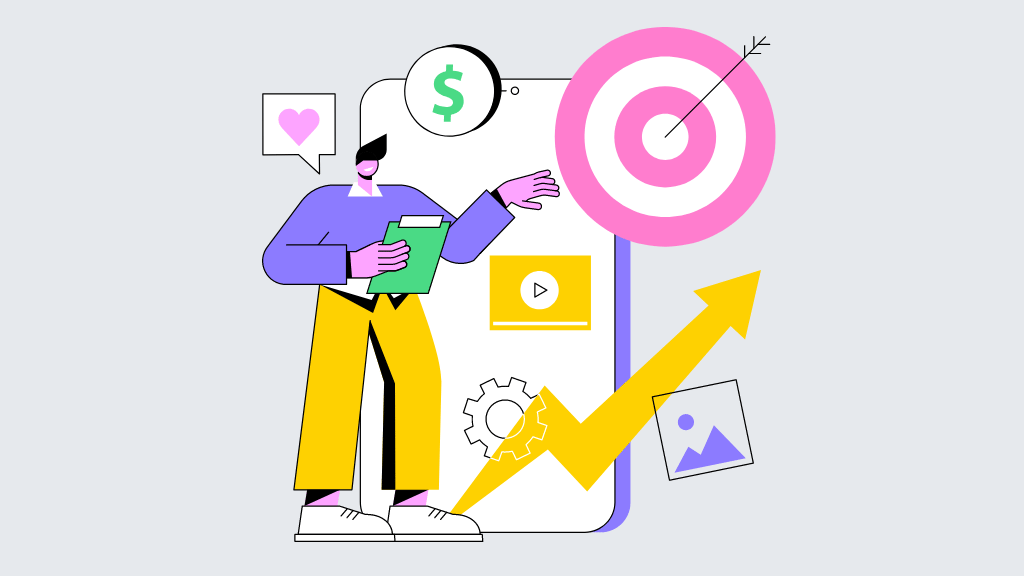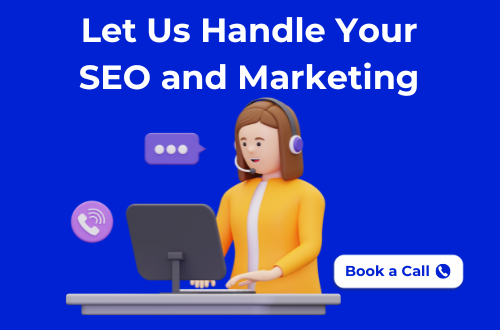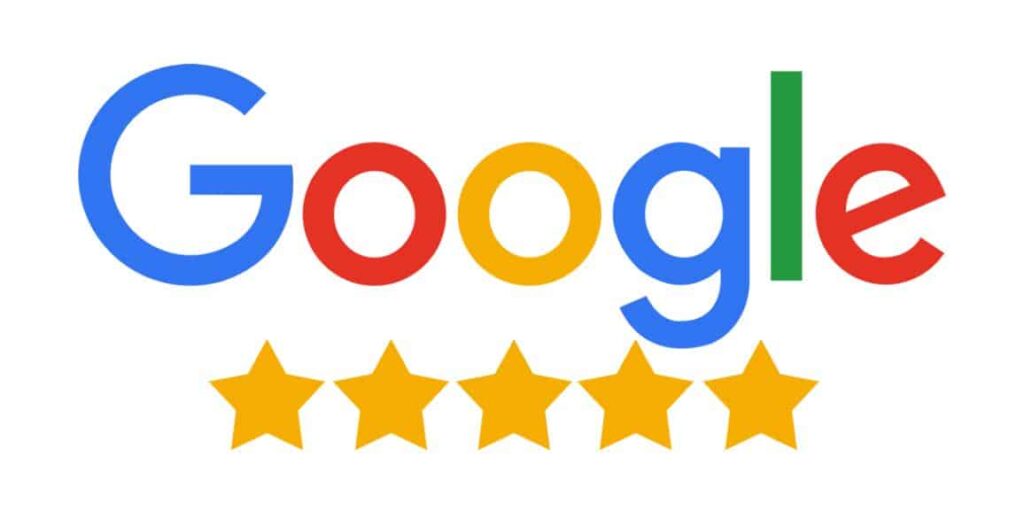In the world of the internet, gaining online success depends on one critical factor: Search Engine Optimization. The key ingredient propels your website to the top of search engine results pages, offering you the coveted visibility that translates to leads, conversions, and, eventually, a thriving online presence.
However, SEO is not a single entity; it is a well-structured edifice built on four foundational pillars that are, Technical SEO, On-page SEO, Content, and Off-page SEO. These foundations will help you organize your optimization process better.
This way, you may ensure that no important elements are overlooked when developing your strategy.
We’ll go over each of the four pillars of SEO and offer ideas on how to best develop your strategy. Before we go into strategy and action items, it’s important to understand search engine optimization.
What is SEO?
SEO stands for Search Engine Optimisation. It is the process of enhancing your website’s rating in search engine results pages. SEO is all about understanding how these algorithms function and making sure your website is optimized for them. The objective is to enhance sales, generate leads, and raise brand awareness.
How Does Search Work?

Before we get into the workings of the four pillars of SEO, it’s important to understand how search engines work. To crawl the web, search engines use computer programs known as web crawlers, spiders, or bots. Their task is to visit (crawl) all of the pages on the internet.
When they come across a page, the bots examine the content (including text, images, video, audio, and so on) and try to figure out what it is about. The data is entered into an index.
This database resembles a library’s index in that it lists all of the headlines as well as information on the author, content, and so on. Google’s index, on the other hand, is a little more complicated.
First, the user enters a search query into the search engine. The search algorithm (the software that connects the user’s computer to the index database) then attempts to discover the pages that best fit their intent. In search engine result pages, the most relevant results with the highest quality content are displayed as links.
However, current search engines consider more than only the content’s quality and relevancy. They also consider the technical aspects of the website. This is because they want to give a wonderful customer experience instead of just offering answers.
Four Pillars of SEO
Understanding these pillars and how your website and current approach fit into them can help simplify your SEO process and help you rank high in search engine results pages.
1. Technical SEO
Imagine your website like a skyscraper. Technical SEO lays the framework for a strong foundation and smooth operation. This pillar focuses on the nuts and bolts that allow search engine bots to crawl and index your website. Consider it creating a clear way for search engines to access and understand your content.
Search engines care about user experience because they want users to be satisfied with the results they see in the SERPs. Ensure that your website meets the basic technical requirements as well as the four pillars of SEO overall. Otherwise, the system could ignore your pages in favor of others that provide a better user experience.
Key Elements of Technical SEO:
A. Website Crawling and Indexing
The crawling and indexing process defines the identification of freely accessible websites and how they are indexed in search engine indexes.
Discovering and indexing websites is an important aspect of search engine optimization because it is the only way for a website to appear in search engine results pages. As a result, it matters most that a website’s discovery and indexing occur smoothly so that the website can rank.
Crawling must be managed correctly inside the site’s structure for all relevant content to be crawled and indexed for the crawling budget to be used.
B. Featured Snippets
Featured snippets are displayed beneath sponsored advertisements and before organic search results. As a result, they feature prominently on SERP pages, which is something to keep in mind while optimizing for search engines. They might appear differently in Google’s answer boxes depending on the search query, especially for information searches.
You may see text highlights, lists, or tables with or without photos or videos. Because Google decides which sites show in Featured Snippets, site managers cannot simply create or tag a Featured Snippet on their site.
C. Website Structure

The organization of pages on your website – the homepage, top-level pages, subpages, and so on is known as website structure, sometimes known as website information architecture.
There are various structural types, but the flatter and easier to follow the structure, the better search engines will find their way around your page.
Complex website architecture has the potential to confuse both bots and visitors, causing them to quit their search for what they are looking for.
D. Page Speed
Search engines prefer websites that are speedy and simple to use. For good reason, speed is one of the most significant page experience signals.
Online visitors have little patience for slow-loading websites and are more likely to click on the next link in the SERPs if the one they click on takes too long to load. As a result, when the algorithm determines which pages to show the user, it prioritizes the quicker ones.
A recent study on the impact of page load time on retail websites revealed how load time influences user behavior and website sales. According to the study, a delay of 100 milliseconds generates a 7% decline in conversion rates.
E. Mobile Friendliness

As you may know, mobile devices account for over 70% of all Internet usage. The mobile-friendliness of your website can affect your rank in the search engine results page as millions of people access the internet via smartphones or tablets.
Google now emphasizes mobile-friendly content when indexing. This means that while desktop-only websites would not disappear from the search engine’s index, people on mobile devices are unlikely to come across them. This can, potentially, affect their overall ranking negatively.
2. On-page SEO
On-page SEO refers to optimizations that take place on your website. It ensures that your website is easy to use and gives value to users, giving helpful signals to search engines that help you rank higher.
This type of optimisation improves the chance that bots will understand what your pages are about. As a result, they can better index them, resulting in more relevant requests that people are more likely to click on in the SERPs.
It’s a chain reaction, and everything is dependent on how effectively the search engine interprets your content.
Modern algorithms are far better than previous generations when it comes to natural language processing. As a result, it is easier for them to connect the information on your page to the user’s target.
Every aspect of on-page SEO is completely up to you, that’s why you must get it right.
Key elements of On-page SEO:
A. Keyword Research
Identifying the words and phrases that your intended audience searches for on the internet is essential for the success of any SEO strategy. Keywords help you match your content to the user’s query and objective.
Once you’ve identified the most relevant and high-impact keywords, the next step is to strategically incorporate them into your website’s content, meta tags, and headlines. By incorporating these keywords naturally and easily throughout your content, you increase your website’s visibility in search engine results pages.
However, avoid overusing them because keyword stuffing not only sounds strange and unpleasant but can also result in a Google penalty.
Use synonyms, keyword variations, and related keywords on relevant subtopics to broaden your search terms. This shows to the bots that you are researching every aspect of the topic and offering complete information.
B. Focus on Your Content

Make sure that all of your content is relevant, helpful, and well-written to improve your on-page SEO. To remain relevant, your content must respond to your audience’s search inquiries.
Do some Googling from the perspective of a consumer to find out which search phrases are relevant to you? Look for relevant terms and questions about your business in Google and observe what comes up in the “people also ask” section. Take note of the autocomplete suggestions in the search bar as well.
Once you know what content is being rewarded by Google, you can begin to develop a content strategy that improves on what is already ranking. If your website’s content answers your audience’s major questions, search engines will consider your information as legitimate and authoritative, allowing you to rank higher in search results.
C. Page Title
A suitable title of up to 70 characters should be used for the page. Also, make sure that you optimize it using the primary keywords you are going to target. If your title does not match the content of the page, the algorithm may produce an alternative one to display in the SERPs.
However, it’s possible that you, as a human, can come up with a more compelling title, so avoid clickbait and come up with something both entertaining and accurate.
D. URL Slugs

The URL slug is the section of the link that follows the main domain and is unique to each page on your website.
If your URL does not notify users or search engines what your page is about, it may have an impact on your rankings. Writing SEO-friendly URLs is essential for telling both search engines and users about the content they can expect to see on your website.
Avoid generic slugs that just contain numbers and symbols, or those are overly general and consist of one or two words.
Your URLs should be kept brief and include relevant keywords that explain the theme of your page.
Descriptive URLs including the primary keywords and sections of the headline are beneficial to both SEO and UX.
E. Meta Descriptions
Meta descriptions are the short page descriptions that show beneath the title in search results. Although it is not an official ranking criterion for search engines, it can influence whether or not your page is clicked on, thus it is just as crucial when doing on-page SEO.
When your content is published on social media, meta descriptions can be copied across driving click-throughs from there as well.
If you do not offer a description, the search engine will create one for you. It’s usually the first 155 characters of the page’s content.
Unique meta descriptions that make sense and feature a call to action, on the other hand, create a better UX and, as a result, increase SEO.
F. Headers
Headers, also known as body tags, refer to the HTML elements h1>, h2>, h3>, and so on.
These tags help readers arrange your content and help search engines determine which parts of your content are most significant and relevant based on search intent.
G. Image Alt Text
Image alt text is used to explain their content. It has more than one advantage in SEO. It increases accessibility, demonstrating that you are offering an excellent user experience. Also, it allows bots to better understand what’s on your image.
If there is a problem rendering the image, the page may display the alt text and the image file name instead of a blank space.
H. Internal Linking
Internal linking refers to the process of linking to other useful pages on your website. Internal linking is important for on-page SEO because it directs readers to other pages on your website, which keeps them on your site longer and tells Google that your site is valuable and helpful.
Furthermore, the more time visitors spend on your website, the more time Google has to crawl and index your site pages. This allows Google to learn more about your website and maybe rank it higher in search engine results pages.
I. Structured Markup
Structured markup, often known as structured data, is the act of “marking up” your website source. Google can identify and interpret different aspects of your content more easily.
It is responsible for featured snippets, knowledge panels, and other content features that appear when you search for anything on Google. When someone publishes your material on social media, your individual page information appears nicely.
3. Content

In the world of SEO, your content is the key to increasing your company’s traffic, leads, and conversions.
No matter how well you optimize your pages and the technical parts of your website, high-quality content remains the most significant aspect of your efforts.
- After all, search engines aim to provide users with the content they are looking for.
- Your content informs prospects about what you do, where you do it, who you have done it for, and why they should employ your company.
- If you’re intelligent, the content should go beyond these obvious brochure-type aspects to assist your prospective consumers in achieving their objectives.
Key elements of Content:
A. EAT
Google’s guideline on page quality criteria relies largely on three key features of high-quality content: expertise, authority, and trustworthiness.
Simply put, the author and/or publisher of the content must be a verified expert in their field with significant authority, reputation, and respectability in the business.
Furthermore, the website where the content is published must provide clear information about who is behind it (whether it is a person or a company) and maintain a positive internet reputation.
All of this results in the content on the website being accurate, credible, and valuable.
B. Relevance
The content must be relevant to the user’s query. This means that when you optimize for specific keywords, you have to provide material that is relevant to the keywords and helpful to the users who search for them.
The content must also be consistent with the headline; otherwise, it would be considered misleading.
C. Exhaustiveness
Long-form content is often chosen by search engines. When written efficiently, it offers the user with more relevant information and allows them to discover everything they need in one place.
As a result, when creating your content, you should look into the associated subtopics. This is done so that you can include all of the information that may assist the user in better understanding the topic.
You also help search engines understand what the article is about by citing relevant topics and subtopics.
This is due to the Knowledge Graph, which is a database of entities with basic information about them and how they are related to one another.
D. Recency
The freshness of content is frequently linked to its accuracy and reliability. As a result, when showing search results, Google seeks to show the most recent relevant pages.
This means that even if you post evergreen material, you should revisit it and update it with more recent facts regularly.
E. Richness

Pages with a variety of stuff, such as text, graphics, and so on, are more appealing to users and, as a result, contribute to better SEO.
However, avoid overcrowding the page. This can have an effect on the loading speed. All multimedia content should be included since it provides value and may be valuable to the visitor.
F. Call to Action
Call-to-action buttons may appear out of place in this list, yet they are quite important.
They invite (or push) the user to continue their trip on your website, resulting in users clicking on more of your links and spending more time on your website.
The more involved the user is, the better the impression the bots get.
G. Mobile Friendliness
Your content should have enough white space, short phrases and paragraphs, a lot of subheadings and bullets, and basic enough vocabulary to be visually appealing and easy to read on a small screen.
4. Off-Page SEO
Off-page SEO is the last but not least of the four SEO pillars. Off-page SEO, often known as off-site SEO, refers to everything you do outside of your website to improve your search visibility.
It is important as search engines consider your website’s authority when evaluating rankings. Your authority can influence whether search engines and users regard your company as an expert in its sector.
When other websites link to your website, Google receives good signals that your content is valuable.
Key elements of Off-page SEO:
A. Backlinks
Links pointing to your website from other websites. These links are valuable because they allow authority (ranking power) to be transferred from one website to another.
In the most simplest logical sense, links are votes of confidence from one website to another. The higher the authority of the website providing the link, the more authority that link will convey to the website to which it is referring.
A link to your website from The New York Times website will carry far more authority than one from your dog groomer’s website.
The more backlinks a page has, the more authoritative it becomes.
However, while quantity is always beneficial, the quality and relevance of these links is what really matters.
This means that while creating backlinks, you should always prioritize those that will help your page’s visibility. Avoid possibilities that simply waste time and resources on every link you can get your hands on.
B. Social Media

Businesses can use social media platforms to engage with their target audience, increase brand visibility, and generate traffic to their websites. Active social media participation can have a big impact on your online reputation and SEO efforts.
Building a strong social media presence on platforms like Facebook, Twitter, Instagram, and LinkedIn allows you to present your company. You may establish yourself as an industry authority and develop a dedicated following by continuously delivering quality and relevant information.
C. Local Search
Local search profiles, such as Google Maps. If you have a physical location or serve a specific area, a Google Maps listing via Google My Business is important. Simply verifying your location and contact information with Google creates confidence. You can also increase confidence by obtaining five-star customer ratings and comments.
You should also try to get listed in local directories. These backlinks are not very valuable. Your position in these listings, on the other hand, may boost your reputation and reliability, bringing in significant traffic.
D. Reputation Management
SEO relies heavily on online reputation. What others say about you can mean the difference between success and failure.
Third-party website and platform reviews constitute the foundation of your digital reputation. Although you have little control over what others say about you, you should constantly try to respond to all reviews.
Engaging with people who have left a bad opinion about your company allows you to try to make amends and improve their opinion of you. As a result, they may rethink. Even if they don’t, it’s respectful. It can also influence how others perceive you as someone concerned about the quality of their services.
Monitor brand references as well, and try to keep ahead of unfavorable backlash. Use Google Alerts and social listening tools to keep track of what others are saying about you.
Conclusion
SEO marketing consists of four pillars, each of which comprises a set of factors. Following these pillars will contribute to your online success by increasing the visibility of your website, attracting organic traffic.
Keep in mind that when optimizing your content the ultimate goal of SEO is to guarantee that search engines understand what your pages are about. This way, they will only show them to users who are more likely to love your content.




